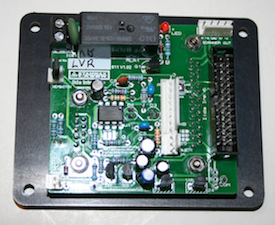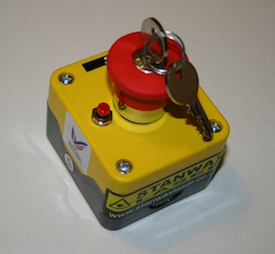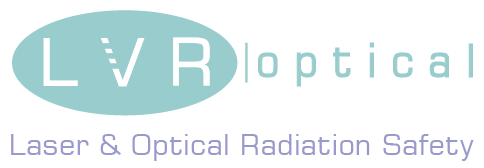
BLOG: EN 60825-1:2007 - Push The Button
When you buy a laser projector, it will no doubt make a reference to a series numbers ‘60825’, and make some kind of statement that the product ‘complies’ or ‘conforms’ to this safety standard. But what exactly do these numbers mean? And what are the legal implications of the safety standard?
The ‘60825’ element refers to a family of laser product safety standards created by the IEC. Part 1 in the series is the overarching laser product safety standard, and its latest version was published in 2007, carrying the full reference and title EN 60825-1:2007 Safety of Laser Products – Part 1: Equipment Classification and Requirements.
Across the European Community laser projectors fall under the scope of the Low Voltage Directive, and as a such, being a laser product they must have fitted a minimum number of safety features as specified by the EN 60825-1:2007 laser product safety standard, in order for the supplier to declare compliance and be able to issue a Certificate of Conformity and put a ‘CE’ mark on the device.
When a manufacturer puts the CE mark on their product, and states that their product is EN 60825-1:2007 compliant, this is their legal statement that the product has the minimum specified safety features as specified by the safety standard.
The safety standard defines different types of laser products, and clearly specifies what safety features should be included in the product in order to be ‘compliant’. Now, the safety standard is written to be clear and unambiguous, so that manufacturers can easily determine what is needed in order to meet their legal duties as a product supplier. But something seems to be going wrong…
I’m sure many of us are aware of the low-cost laser products being sold through auction sites etc, and would instantly think of these as being the main culprits of not being able to get things right. And whilst a quick glance at many such products often shows this to be the case, it’s not just the low cost product are getting things wrong.
Part of the work we do at LVR means we get to see a fair number of laser projectors, either through installation assessments, or product testing. And you may be surprised to learn that even many of the manufacturers of laser projectors costing several thousand pounds or more are still showing patchy compliance with the safety standard that they claiming full compliance with. Even projectors that cost the price of a small property often will not have the minimum safety features present!
Common mistakes are incorrect labelling, missing interlock provision, and the non-removable key switch. But the one feature that seems to catch nearly all laser projector manufacturers out is lack of the ‘Start Button’ or ‘Manual Reset’.
So what does the Start/Reset button do?
The current version of the laser product standard refers to the feature as a ‘Manual Reset’, stating that all Class 4 laser systems must include a manual reset to enable the laser emissions, following an interruption by the remote interlock connector, or an interruption of mains power of 5 seconds or more. – In practice these means having a Start/Reset button that is used to initiate light output, when the laser is first turned on, and used if there is a power interruption or the interlock circuit is temporarily broken.
The fact this feature was only added in the 2007 edition of the standard might be one of the reasons it’s still not commonly implemented by manufacturers. But with the last date of the old standard being applicable expiring over two years ago, (1st September 2010), the strict legal requirement for the feature, means the continued rarity of a button shouldn’t be the case.
But why are manufacturers still not including this essential feature in their products when there is the legal duty to do so? Well, from conversations we’ve had with laser projector suppliers, the common reason seems to be the lack of awareness of the requirement. Which seems a bit of a poor excuse given that they are certifying their products as being compliant, but not making sure the products actually are. (Maybe there is a role for ILDA, the industry’s trade association to advise its members of the requirement?!). A test house should normally pick up the shortfalls in features being missing, but with the laser show industry being so small, most manufacturers will self-certify, carrying out the compliance tests themselves. There is nothing wrong with the approach of self-certifying, and if a manufacturer buys the latest copy of the safety standard, they can check that all their features and labelling are correct before they supply to end users. With the scale of the labelling and features that are consistently wrong on so many projectors, one has to wonder where the (wrong) information is coming from?
Practical Solutions
But what of the projectors that are non-compliant, that have been supplied after August 2010? The first thing to do is go back to the supplier and ask why the features are not present, and request that they be fitted. If they don’t know what you are talking about, ask them if they actually own the 2007 edition of the laser safety standard.
In terms of the missing start/reset button, we’ve heard multiple manufacturers say that including such a switch is impractical for devices intended to be installed high up in trussing etc, which is fair comment. However, manufacturers that have done things correctly, have thought about it, and made the start button available on a wired remote control.
If the manufacturer is unable to provide the start/reset functionality, or you are making your own projector, either for your own use, or as a manufacturer yourself, there is an excellent off-the-shelf solution to implementing this feature provided by Stanwax Laser (www.stanwaxlaser.co.uk). The image shows the ILDA Interface Board mounted to the optional panel mount.
 Stanwax have recognised the issue and appreciating the requirements of this part of the standard have developed a small circuit module, called the Stanwax ILDA Interface Board, that is capable of providing the correct functionality.
Stanwax have recognised the issue and appreciating the requirements of this part of the standard have developed a small circuit module, called the Stanwax ILDA Interface Board, that is capable of providing the correct functionality.
The board is available in two different versions; one complete with a panel and 25-way ILDA connector attached that can be fitted directly to the case of the laser projector. The second type has separate circuit board that is intended to be located internally within the projector, connecting the ILDA connector via small cable.
The board we looked at for testing was built to a good standard and came with 5-page instruction manual detailing how the module works, and how to connect it to your laser system.
The module came with a 9-way D-Type connector to enable the connection of a remote control providing status indicators of the laser power and enable condition, along with an emergency stop link, and the all important start/reset button. A full wiring diagram is included so you can connect these features to a remote control of your own design. Alternatively, Stanwax sell a compatible e-stop with the start button / LED included.
 Local connections to the module in the projector include a power source (12v-24v dc) that has to be present when mains power is supplied to the projector. The PCB has provision to connect a local emission LED and keyswitch. A shutter output is available to connect a solenoid type device to provide a mechanical beam stop for the laser output, and an additional relay output enables the PSU’s to the lasers to be controlled. (We preferred the shutter option as it avoids spurious laser outputs that sometimes occur when power is supplied or removed).
Local connections to the module in the projector include a power source (12v-24v dc) that has to be present when mains power is supplied to the projector. The PCB has provision to connect a local emission LED and keyswitch. A shutter output is available to connect a solenoid type device to provide a mechanical beam stop for the laser output, and an additional relay output enables the PSU’s to the lasers to be controlled. (We preferred the shutter option as it avoids spurious laser outputs that sometimes occur when power is supplied or removed).
The board also provides a convenient connection method for breaking out the X-Y scanner signals and four colour modulation signals from the ILDA port.
The latest version of the module now includes the very useful ability to link multiple laser projectors together and control the emergency stop from one button, that will terminate the output on all projectors simultaneously. This certainly beats having multiple cable runs and buttons from each projector to the control position, and makes the stopping process less like a game of 'Whack a Mole/Gopher'!
All in all, our experience with the board was good. Both the build and documentation quality was good. And at a cost that hardly makes it worth the effort to design your own logic/relay system to undertake the task.
A full discussion on the required product laser safety features take place at our standard laser operators training course, which is ideal for manufacturers and operators alike. Alternatively, if you are a manufacturer, and would like LVR to help ensure that your product is legal and compliant, please contact us to discuss how we can help.
© 2012 LVR Optical
